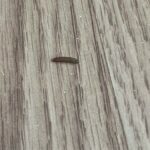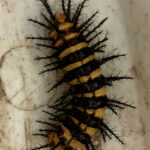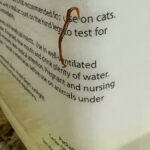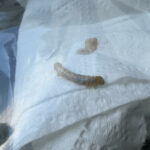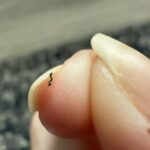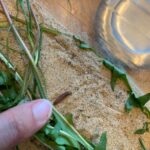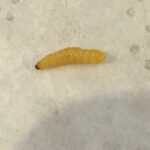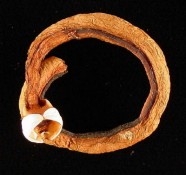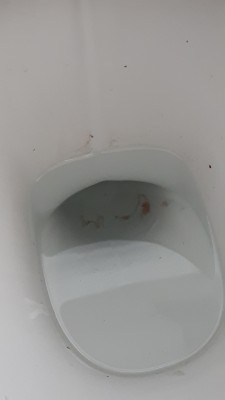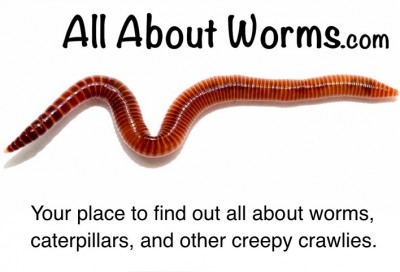
“What is this?” asks Amanda in her submission regarding the organism pictured below. “How is it luminous and segmented, in so many colors? Is that a second eyeball half way down its body or a second head? It’s about the size of a cat hair, small to medium in length.” To answer Amanda’s first question, we have no idea what this is. Not only does the description of the worm not sound familiar to us, but the photo is too blurry for us to make out any identifying information. All we can see from the photo is that the worm is very thin, indeed like “cat hair”, and that it does possess the luminescence that Amanda describes. But we cannot think of any worms that are hair-thin, luminous, multicolored, and segmented.
With that said, to answer Amanda’s second question, worms can be “luminous”, multicolored, and/or segmented for many reasons. When it comes to luminous worms, the only species we know of that fit this description in the literal sense are marine worms like the Bermuda fireworm. These worms glow just like fireflies, and the reason for this is actually part of their mating rituals: the females glow when they begin to produce eggs, so as to attract the male worms for reproduction. We would think that, being deep sea creatures, being able to glow would definitely come in handy. Likewise, some species of worms (or worm-like creatures) are multicolored for the same reason: they want to stand out and attract a mate. That said, others are multicolored for the exact opposite reason. They want to blend in with their surroundings. We use the word “want” lightly: naturally, the coloration of worms and worm-like creatures is not an intentional act, but a product of evolution.
Now, when it comes to segmentation, this is a very common trait among worms. The group of worms known as annelids, to which the earthworm belongs, are all segmented. The segmentation has many purposes. For one, it allows the worm complete control over every inch of their body: each segmented can be individually moved as each segment has its own muscles. You can see this in the way that earthworms move. They contract and extend their body to wriggle across the ground, which they can only do because of their segmented bodies. Likewise, the segmentation actually divides up the organs of the body. For some worm-like creatures (that are not actually worms), like the millipede, the segments also split up body parts. The millipede has one set of legs per segment. It goes to show how beautifully organized nature is in its creation of these creatures.
When it comes to Amanda’s final question, we have no idea if that is an eyeball or a second head “halfway down” the worm’s body, because we can barely make out any of its physical characteristics other than its shape from the photo. What we will say is that it is likely neither of the two options. The eyes of a worm are typically situated near one end of its body, on its ‘head’, if it has any at all. But it would not have ‘eyeballs’, per se. If there is a spot halfway down its body that looks like an eyeball, then it might be a false eye spot, which some species of caterpillars possess as a defense mechanism to scare away predators. When it comes to it having a second head, this is oddly enough not an impossibility among worms, but it is extremely rare, so we doubt this is the case.
In conclusion, we don’t know what it is that Amanda found. She might want to take the worm to her local county extension office, as someone will be able to physically examine it there, and might have a better chance at arriving at a conclusion as to the worm’s identity. We hope something here proves informative nonetheless, and we wish Amanda the very best!
All About Worms is always free, always reader-supported. Your tips via CashApp, Venmo, or Paypal are appreciated! Receipts will come from ISIPP Publishing.
You might also find these guys interesting!




